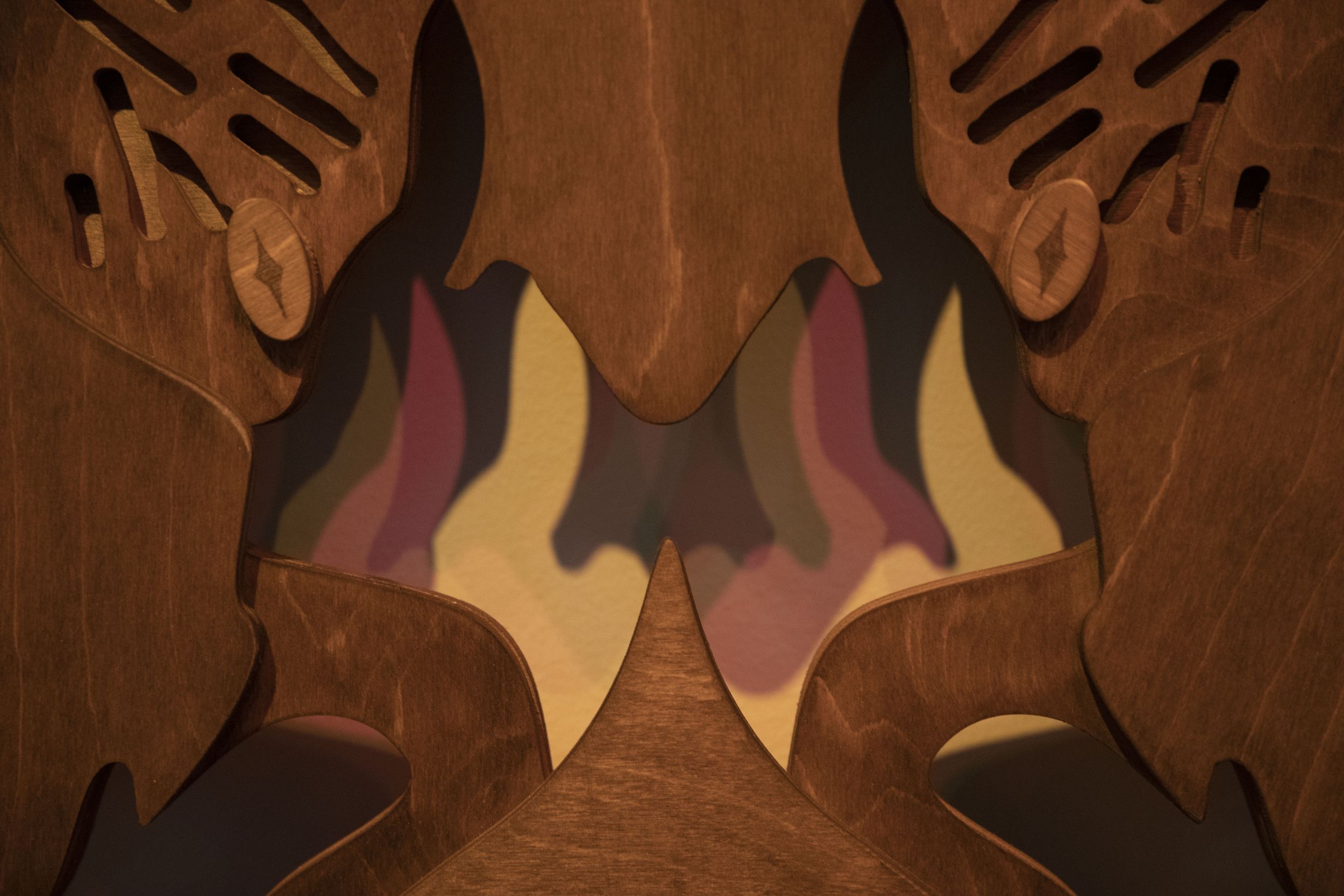Torot. Eight Songs
Two projects by artist Slava Nesterov—labyrinths of worlds formed out of elements of Japanese manga, Slavic folklore, Urals church sculpture, and modern horror aesthetics.
The exhibition Sorcerers shows how different artists work with dark folklore. They are all intrigued by various aspects of the fantastic, supernatural and horrific, as manifested in history, local mythology, Soviet folklore, and digital reality. Although it may seem at first glance that sculptures of wood spirits and references to 1980s children’s films have nothing to do with modern nightmares, the project helps to focus our perception.

Slava Nesterov assembles his own unique fantasy world out of a variation on themes of Slavic, Uralic and Scandinavian legendariums. His universe resembles a labyrinth of successive rooms. Two of these multi-layered, convoluted worlds are displayed at the exhibition.
The project Torot arose from a series of illustrations. Stylistically, they reference works by the Russian artist and Mir Iskusstva member Ivan Bilibin (1876–1942), combining classic Russian woodcuts and the subtle colouring of the Japanese artist Hokusai (1760–1849). Nesterov forms the black and white subjects of his works out of elements of Japanese manga, depictions of unknown beings and fictional plants, motifs of Permian bronze casts, and modern horror aesthetics. They all fit into an enchanted story, which like a palindrome is perceived identically from all sides and constantly reproduces itself. These are sacred territories in a certain sense, where metaphysical images are combined with material ones. Nesterov’s world can exist only by constantly growing, always adding new creatures. In fact, the name Torot is also a palindrome: it reads the same forwards and backwards.
The series Eight Songs is organised according to a similar principle. It consists of wooden objects which by their very structure reproduce the cyclicity of the world creation, an eternal mythological circle, the transition of beings from one state to another. The cycle refers to the Ancient Greek concept of «hule» (ὕλη), «forest, ” which the philosopher and translator Vladimir Bibikhin (1938–2004) considered to be a life-giving element; nature opposing technology. At the same time, the forest becomes a metaphor of the network structure, on which the modern perception of the world is based.
In Nesterov’s wooden objects, the features of the Permian animal style and the wooden church sculpture from the same region can be seen. However, they do not depict the ancient patrons of the Urals, but previously unseen characters, making us think of the secret flow of history and hidden motives. These objects are symmetrical by form and content, but despite their apparent gloom, Nesterov’s world has a place for hope: an exit can be seen from the forest labyrinth.
* Some of the works were created at the Vaults Centre for Artistic Production